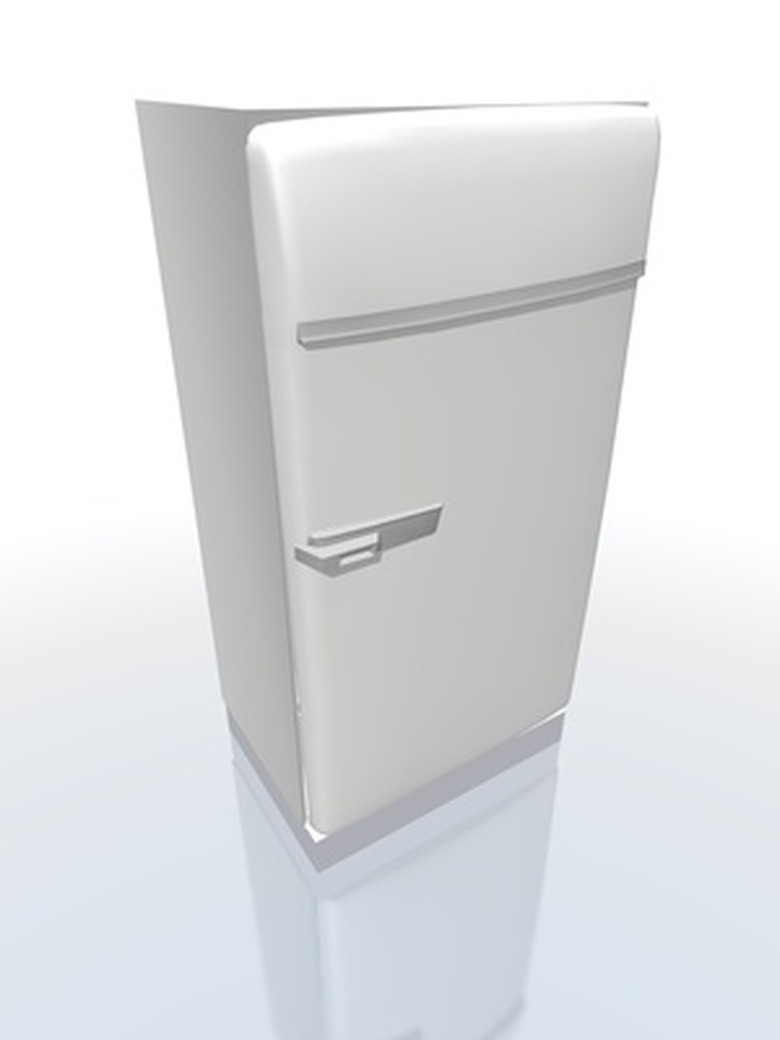How To Recharge Freon To Repair A Refrigerator
Things Needed
-
Phillips screwdriver
-
Nut driver
-
Saddle valve kit
-
Refrigerant valve adapter
-
Refrigerant charging hose kit
Tip
The refrigerator lines and coils must not have frost covering them when recharging with Freon.
When charging the system, you can tilt the can to its side for 10 to 15 second bursts. When you do this, you must allow the system pressure to equalize before continuing.
Warning
Never back the saddle valve out more than one full turn.
Freon, Dupont's trademarked name for CFC and HCFC refrigerants, has become a generic name for all refrigerants. Refrigerators manufactured before 1995 usually contained R-12, a CFC, as a refrigerant. Only EPA certified technicians can buy R-12. Refrigerators manufactured from 1995 to the present typically use R-134a, an HFC, as a refrigerant. Both refrigerators and automobiles use R-134a as a refrigerant, and adults can buy it at most automobile parts stores. Combining the noncompatible refrigerants R-12 and R134a will lock up the compressor.
Step 1
Remove the compressor access cover from the rear of the refrigerator. Use a Philips screwdriver or a nut driver to remove the screws.
Step 2
Look at the tag found on the compressor for the type of refrigerant used.
Step 3
Install a saddle valve on the large copper pipe coming from the compressor. A saddle valve pierces the refrigerant line for access. A saddle valve uses two pieces to wrap around the pipe with hex-head screws holding them together. Use the hex-head wrench that comes with the valve assembly to tighten the hex-head screws.
Step 4
Install a refrigerant valve adapter to the saddle valve. The adapter screws onto the saddle valve service port.
Step 5
Connect a refrigerant charging hose kit to a can of refrigerant. The charging hose kit includes a color-coded gauge, hose, threaded fitting that connects to the can of refrigerant, and a service valve connection that will connect to the adapter on the saddle valve.
Step 6
Connect the charging hose connection to the saddle valve adapter. This snaps into place.
Step 7
Use the hex-head wrench to turn the piercing valve, found in the center of the top half of the saddle valve, three full turns. Back the wrench out one full turn. Residual refrigerant from the refridgerator should enter the charging hose.
Step 8
Turn on the refrigerator. Allow it to run until the pressure gauge stops dropping. This usually takes three to five minutes.
Step 9
Check the pressure gauge. R-134a ideally should have between 25 and 45 psi. Open the refrigerant can port, allowing refrigerant to enter the system. Close the port every minute to check the pressure. Continue to add refrigerant until the pressure has reached the correct range.
Step 10
Close the piercing valve with the hex-head wrench. Disconnect the charging hose. Reinstall the compressor access cover.
